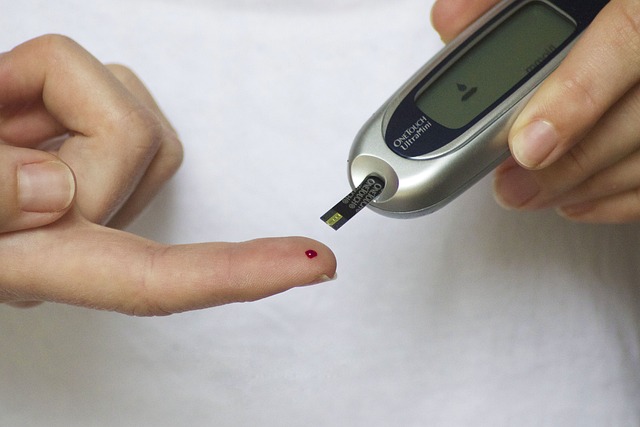Ozempic for Diabetes: Mechanisms, Efficacy, and Long-Term Health Impacts

Lifestyle
Effectively managing diabetes involves an approach that includes making lifestyle changes, taking medication, and monitoring the impact regularly. Ozempic, a medication that has been gaining in popularity for its effectiveness in treating Type 2 diabetes, will be the focus of this article. We will explore how Ozempic works, its effectiveness as a treatment for diabetes, and the potential long-term effects on health.
Lifestyle Understanding How It Works:
Those wondering where to get Ozempic should first understand how the drug works. Ozempic is classified as a glucagon-like peptide one receptor agonist (GLP 1 RA) medication. It functions by imitating the actions of glucagon-like peptide 1 (GLP 1), a hormone that is naturally found in the human body. When blood sugar levels increase after eating, GLP 1 aids in triggering insulin release from beta cells while also suppressing glucagon production from alpha cells. Apart from regulating glucose levels, GLP 1 also slows down stomach emptying, curbs hunger, and supports weight loss.
Lifestyle Effectiveness in Blood Sugar Control:
Several clinical trials have shown that Ozempic effectively reduces blood sugar levels in patients with Type 2 diabetes. In a study involving individuals who had blood sugar control issues despite taking one or more oral antidiabetic medications (OADs), adding Ozempic led to more notable decreases in both fasting plasma glucose levels and glycosylated hemoglobin (HbA1c) levels compared to those given a placebo.
Lifestyle Benefits of Losing Weight:
Managing weight is crucial for controlling diabetes because carrying too much body weight can worsen insulin resistance. Ozempic has been proven to help patients with Type 2 diabetes lose weight. Clinical trials have shown that individuals who received treatment with Ozempic experienced quantifiable decreases in body weight, unlike those who received a placebo. The reasons behind this weight loss include reducing appetite, slowing down digestion, and increasing energy expenditure.
Lifestyle Safety of the Heart and Blood Vessels:
Besides its effectiveness in managing blood sugar levels and weight, the impact of Ozempic on heart health has been thoroughly examined. Heart attacks and strokes are severe concerns for people with Type 2 diabetes. Fortunately, multiple clinical trials have demonstrated that using Ozempic does not raise the likelihood of these events. In fact, some studies have even shown a decrease in the risk of heart-related incidents among patients treated with Ozempic.
Lifestyle Effect on Low Blood Sugar Levels:
Hypoglycemia, characterized by low blood sugar levels, can be a side effect of various antidiabetic medications. Dealing with episodes of hypoglycemia can disrupt efforts to control blood sugar levels effectively. Nonetheless, research indicates that using Ozempic poses a low risk of causing hypoglycemia when used alone or in combination with oral antidiabetic drugs like metformin.

Lifestyle Long-Term Health Effects:
When dealing with diabetes, it’s important to consider the impact of medication on long-term health since managing this condition requires ongoing care. Fortunately, studies have shown that using Ozempic for an extended period is both safe and effective. A study conducted over a specific period found that patients who consistently used Ozempic were able to maintain their reductions for up to 104 weeks without any decrease in effectiveness. Additionally, those who switched from GLP 1 RAs to Ozempic saw identifiable results in controlling blood sugar levels, proving the sustainability of this treatment option.
Lifestyle Dosage and How to Use:
Getting the right dosage of Ozempic and using it correctly is essential for its effectiveness and safety. The recommended starting dose is 0.25 mg once a week, which can be increased to 0.5 mg after four weeks if needed. The maximum dose per week should not exceed 1 mg. Ozempic is available in a pre-filled pen for easy subcutaneous injection. It should be administered once a week at any time of the day, with or without food. To prevent issues like lipodystrophy and ensure the absorption of the medication, it’s important to rotate injection sites.
Lifestyle Side Effects and Safety Measures:
Just like any other medication, Ozempic may have some side effects that patients need to watch out for. Possible side effects of using Ozempic may include nausea, diarrheavomiting, constipation, stomach discomfort, and headaches. These symptoms are typically mild but may lessen over time as the body adapts to the treatment. If these side effects persist or worsen, it is important to seek advice from a healthcare provider.
Lifestyle In Summary:
Ozempic presents an effective treatment option for individuals with Type 2 diabetes. By replicating the functions of GLP 1, the medication offers several advantages beyond regulating glucose levels, such as promoting weight loss and potentially reducing cardiovascular risks. With its low risk of hypoglycemia and long-term effectiveness, Ozempic has become highly viable as an option for managing diabetes. However, consulting with a healthcare provider is crucial to determine if Ozempic is suitable based on the specific circumstances. With guidance and supervision, integrating Ozempic into a diabetes care plan can enhance blood sugar control, facilitate weight loss, and lower the likelihood of cardiovascular events for those with Type 2 diabetes.



 Hot Deals
Hot Deals Shopfinish
Shopfinish Shop
Shop Appliances
Appliances Babies & Kids
Babies & Kids Best Selling
Best Selling Books
Books Consumer Electronics
Consumer Electronics Furniture
Furniture Home & Kitchen
Home & Kitchen Jewelry
Jewelry Luxury & Beauty
Luxury & Beauty Shoes
Shoes Training & Certifications
Training & Certifications Wears & Clothings
Wears & Clothings
















